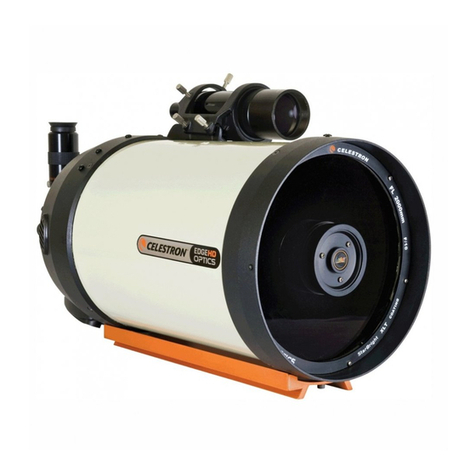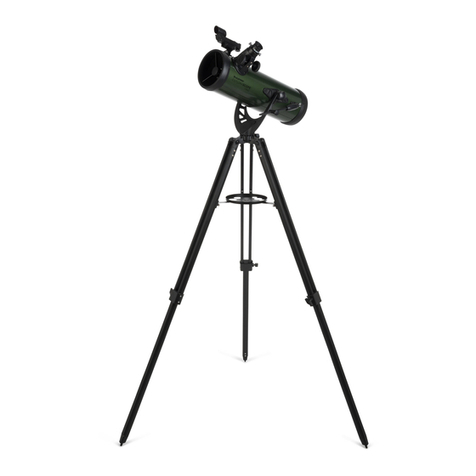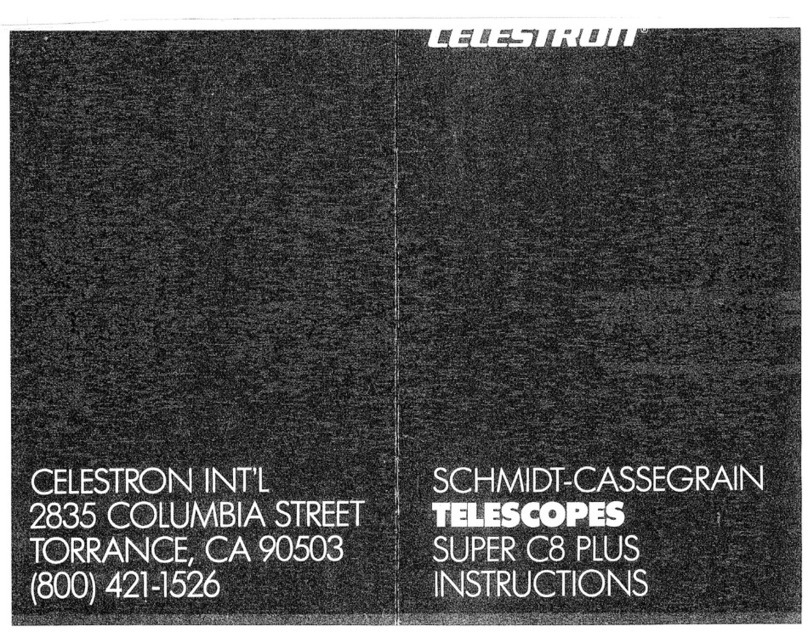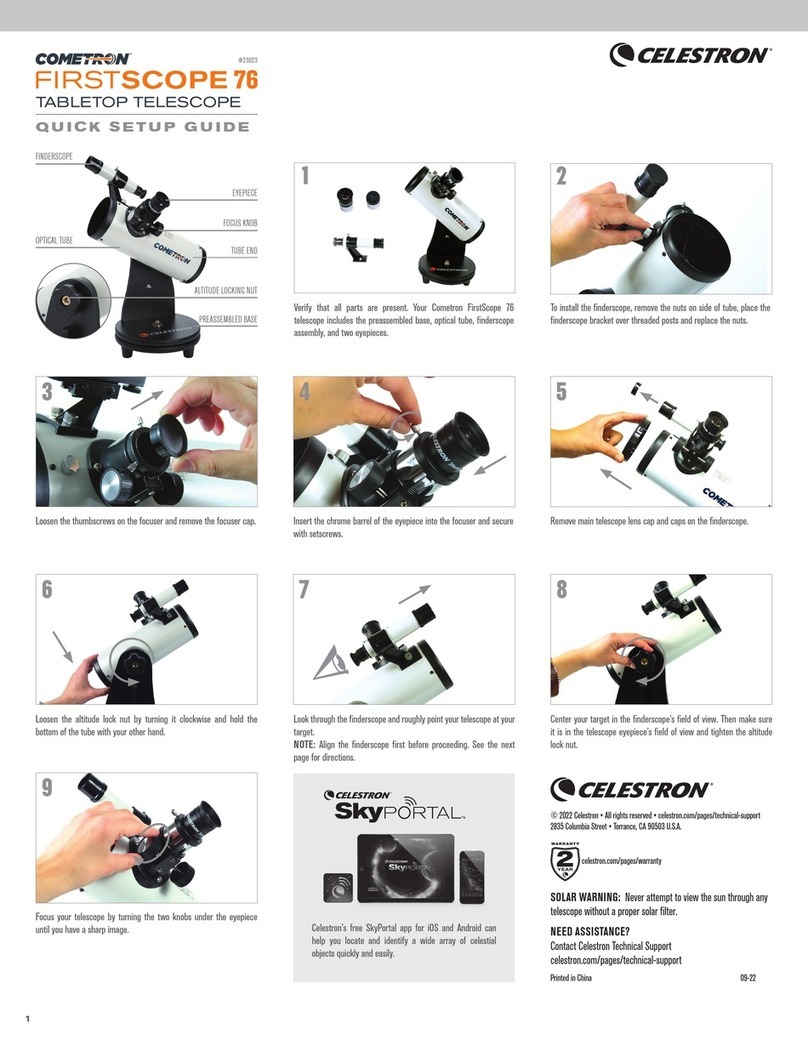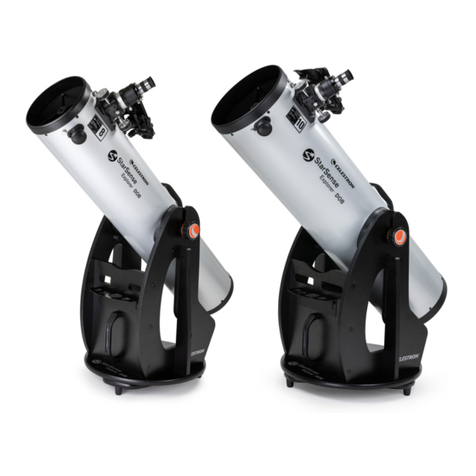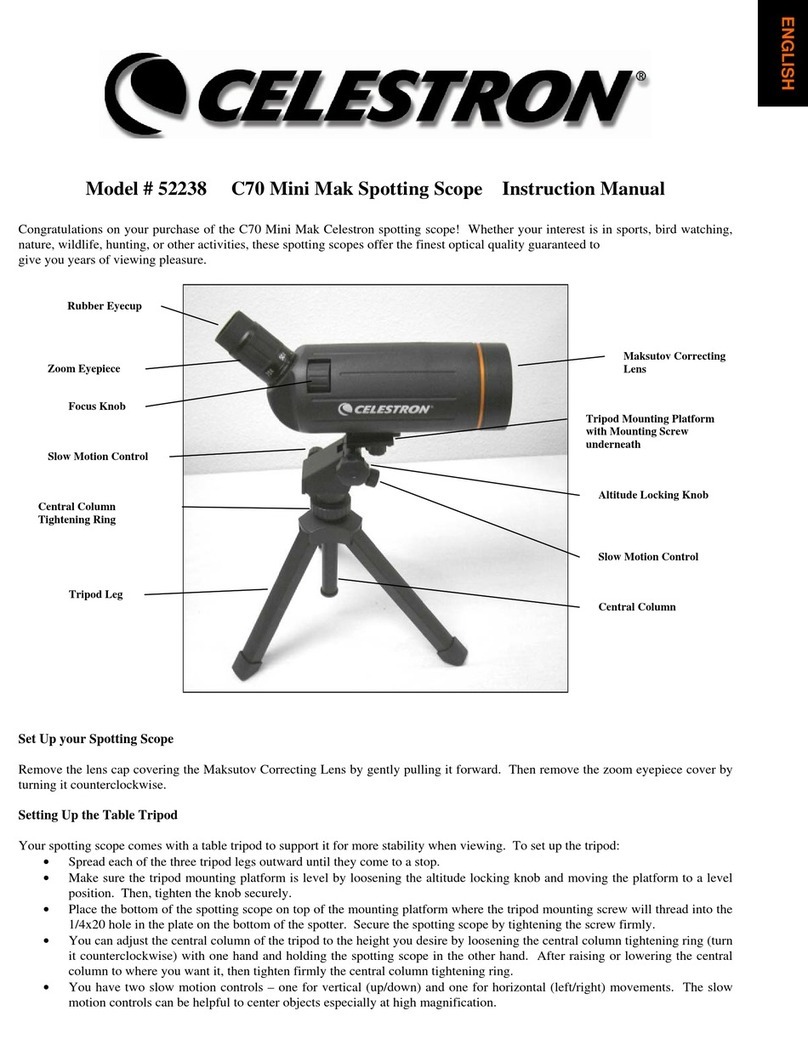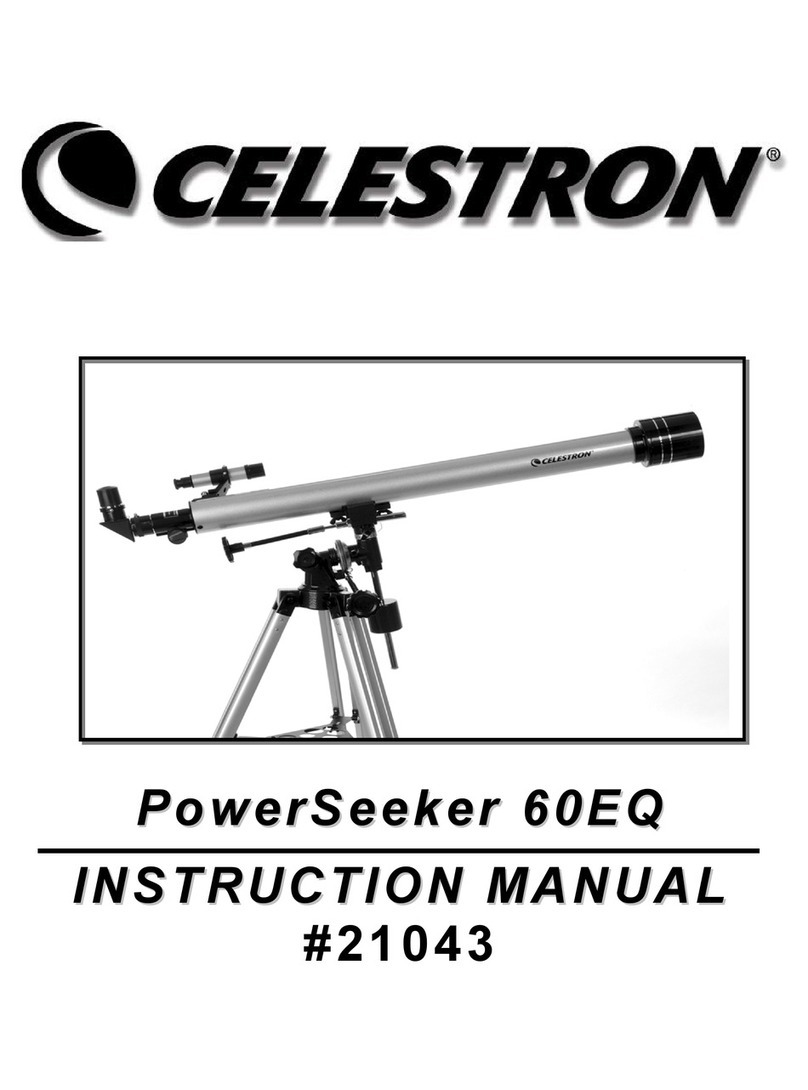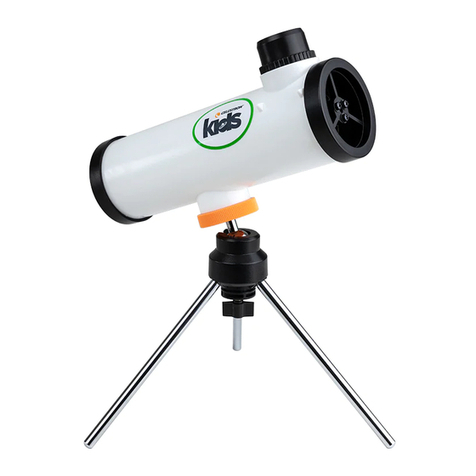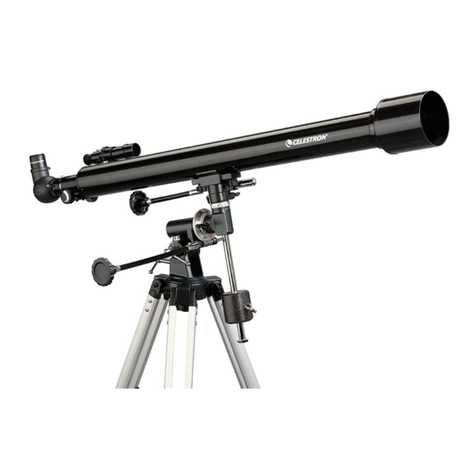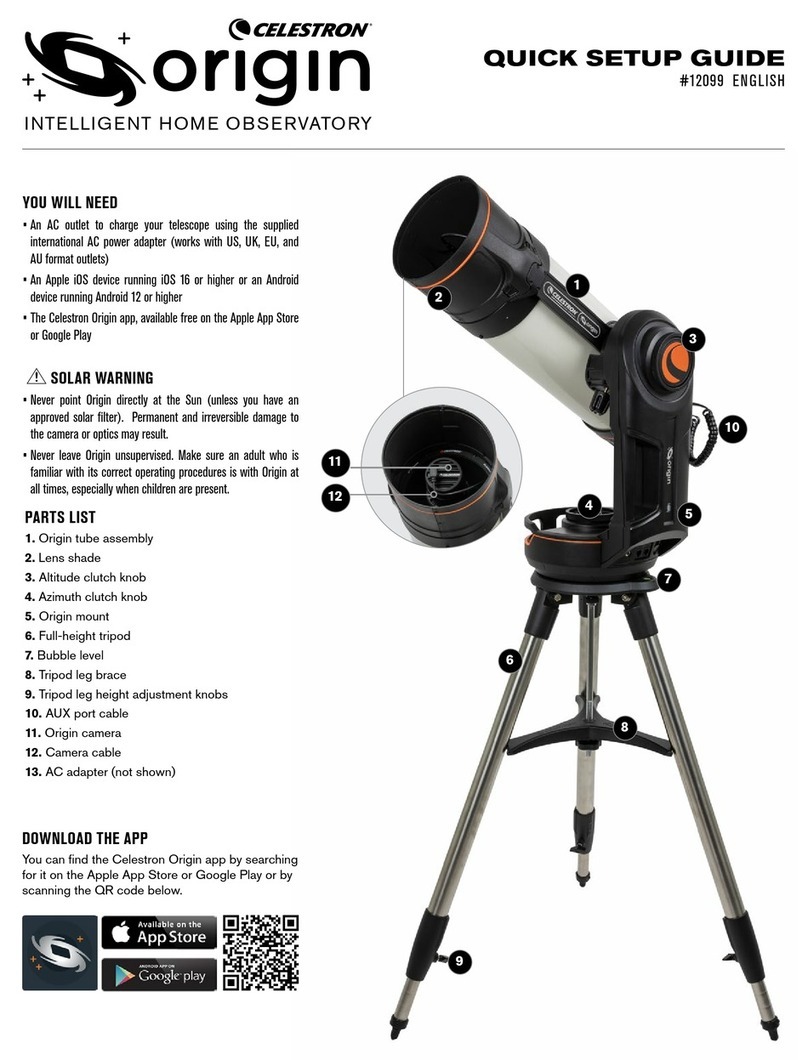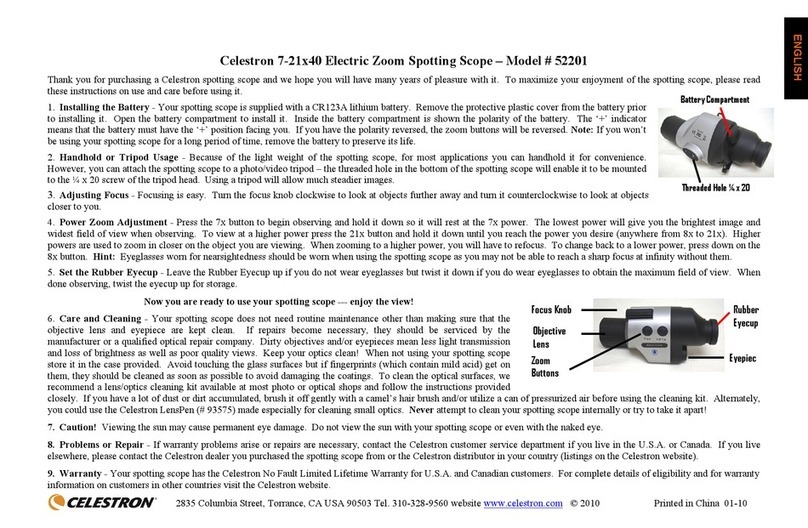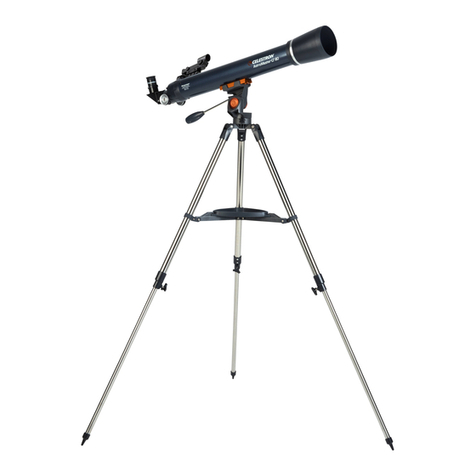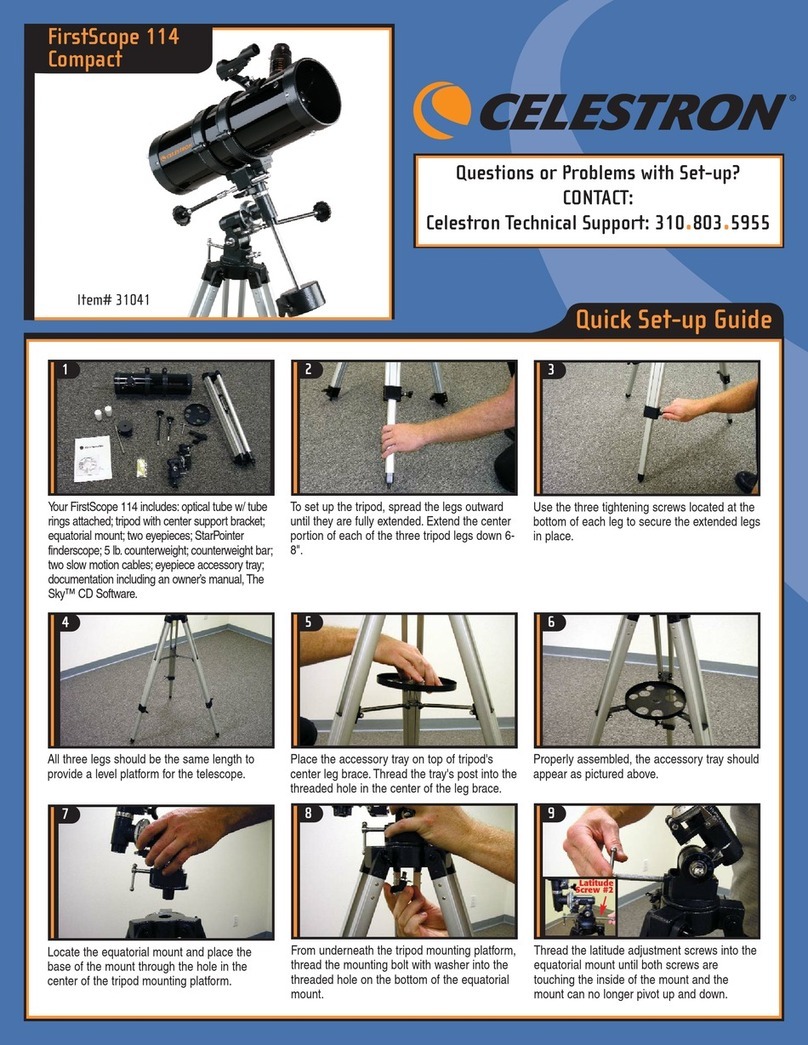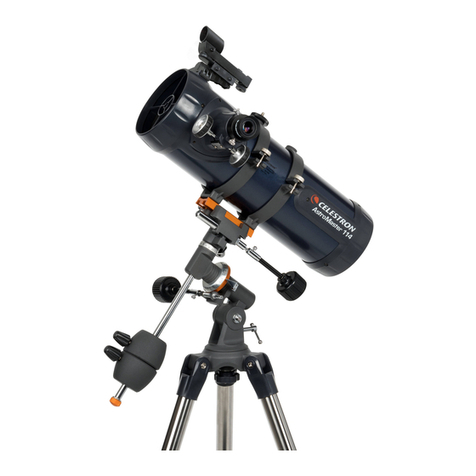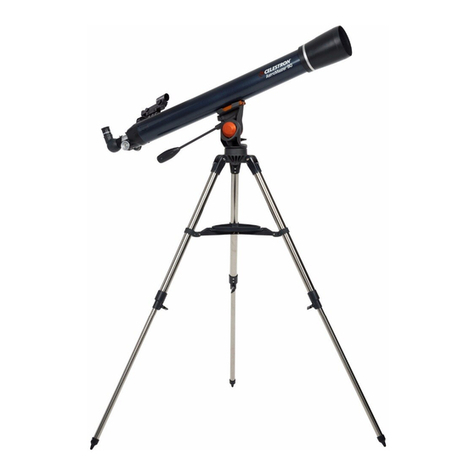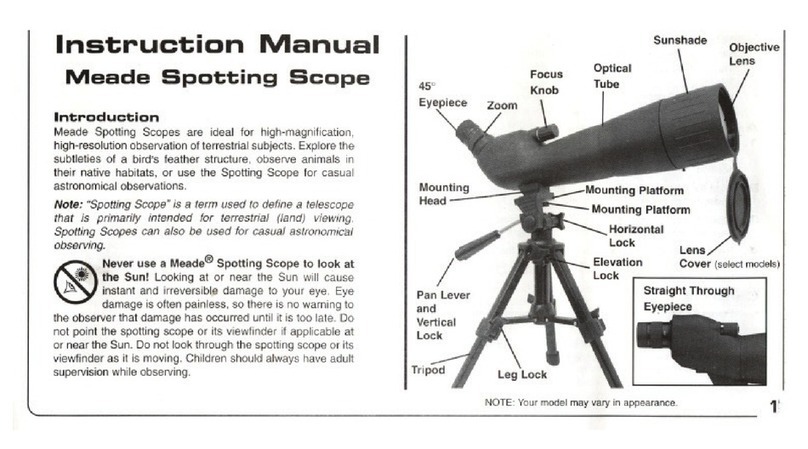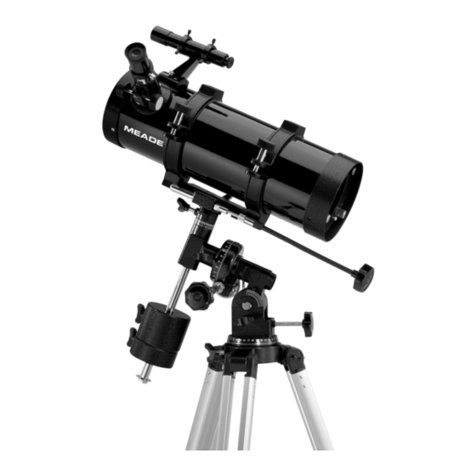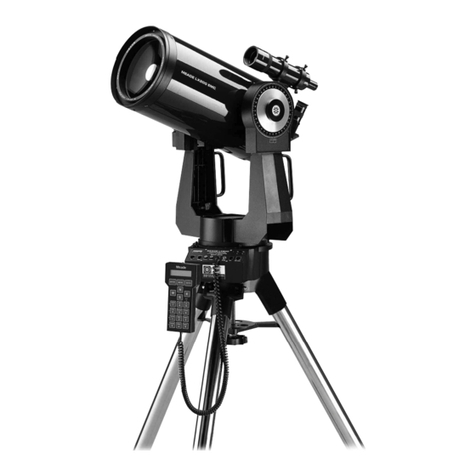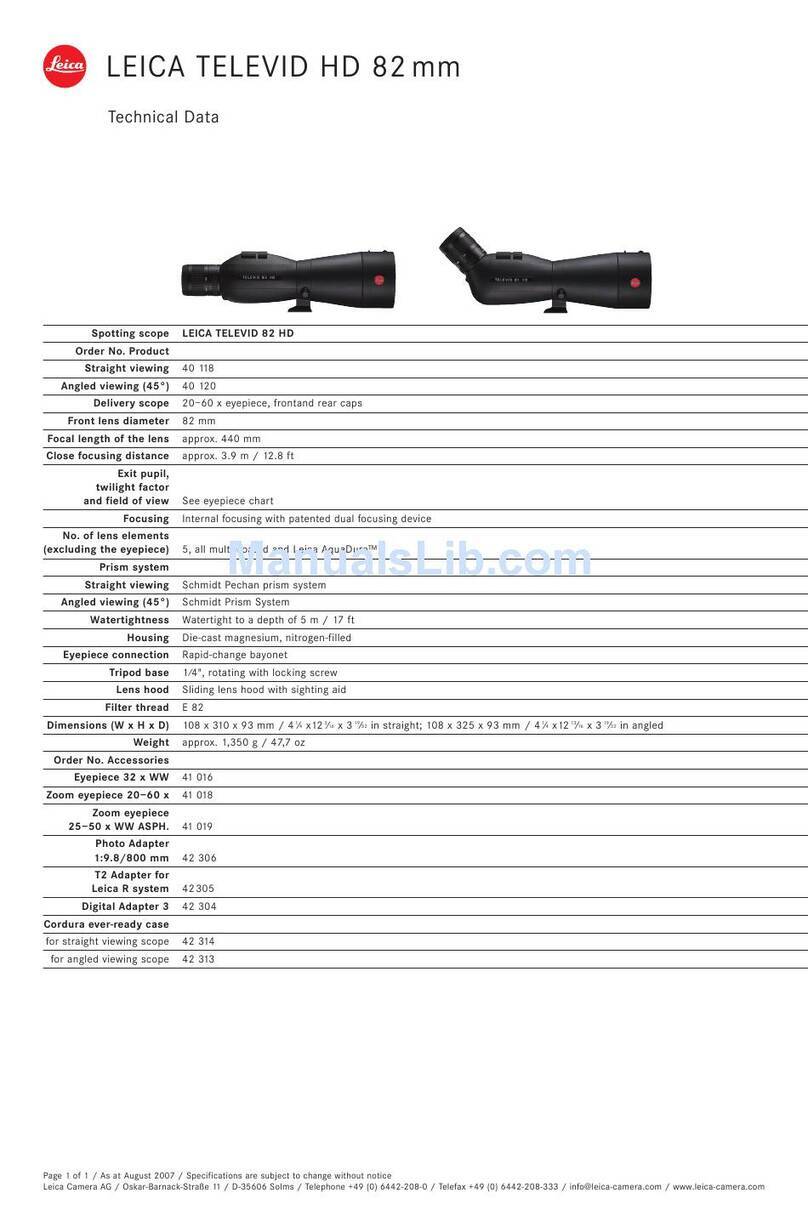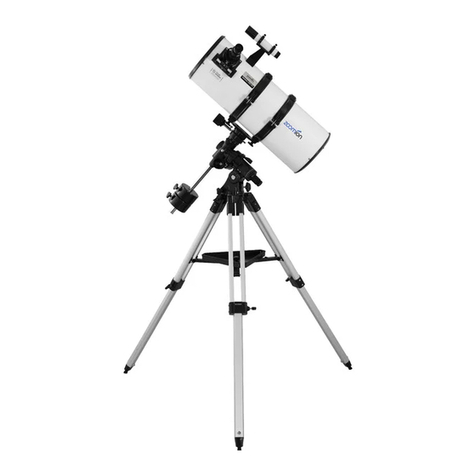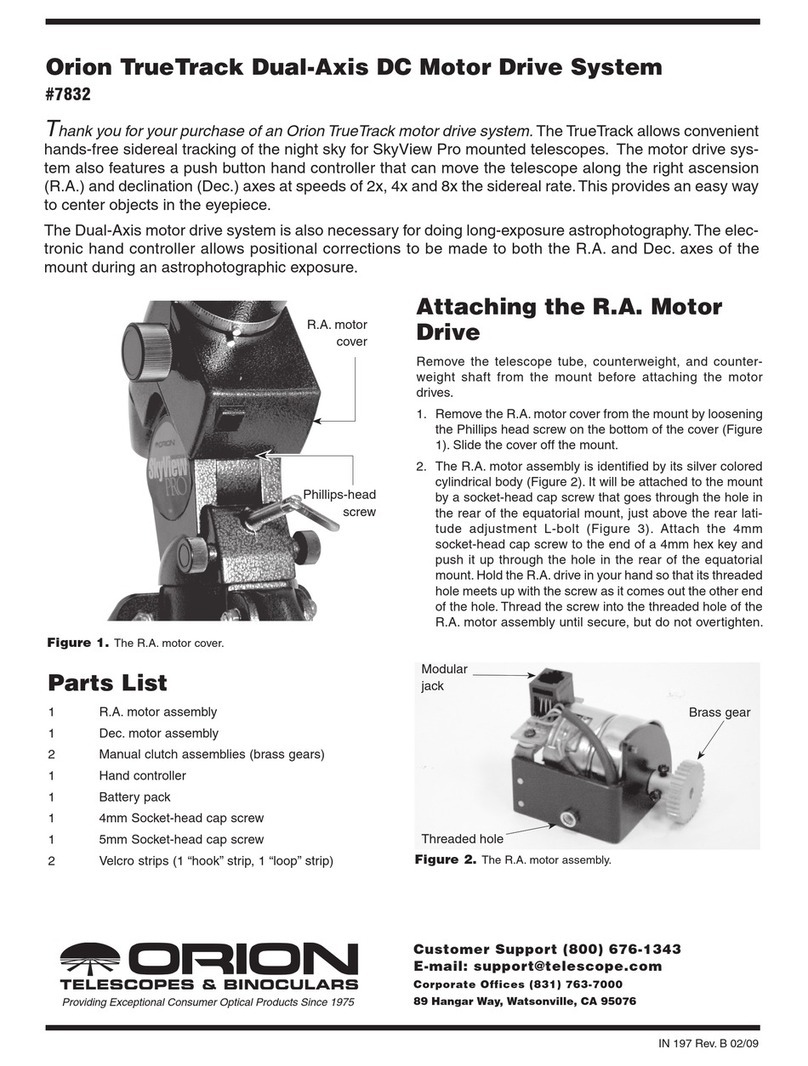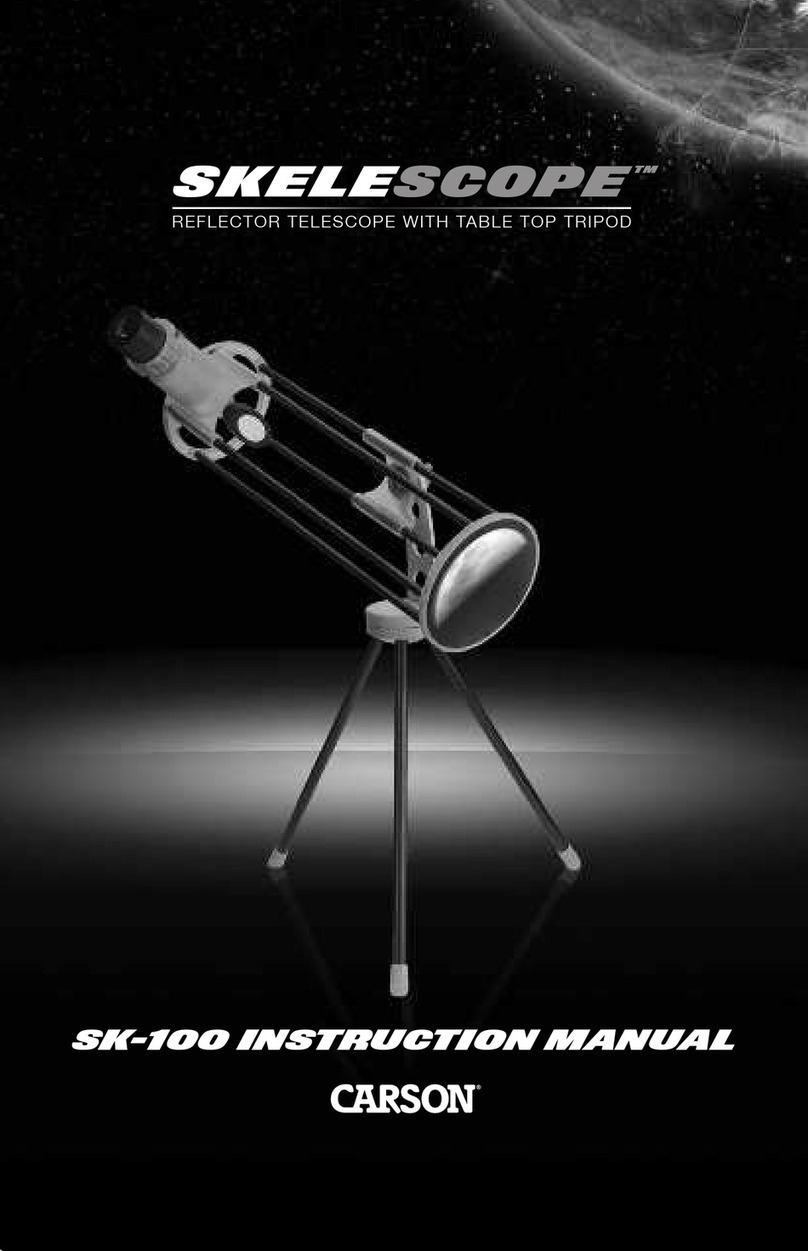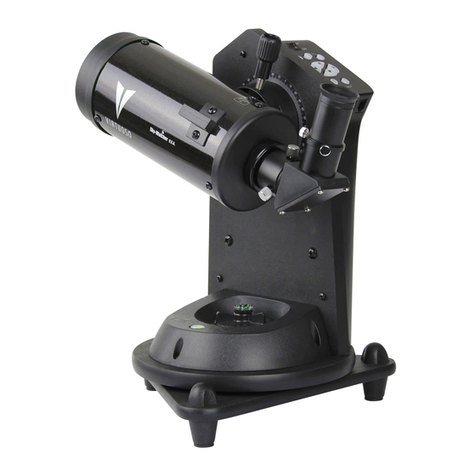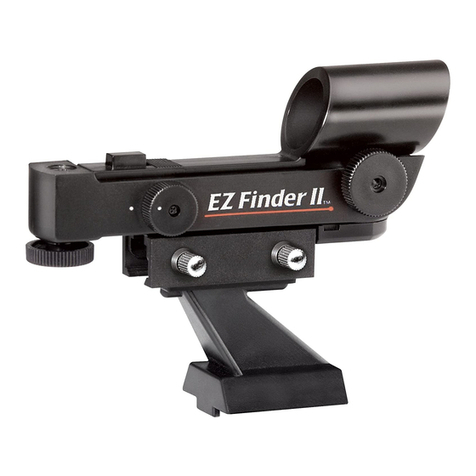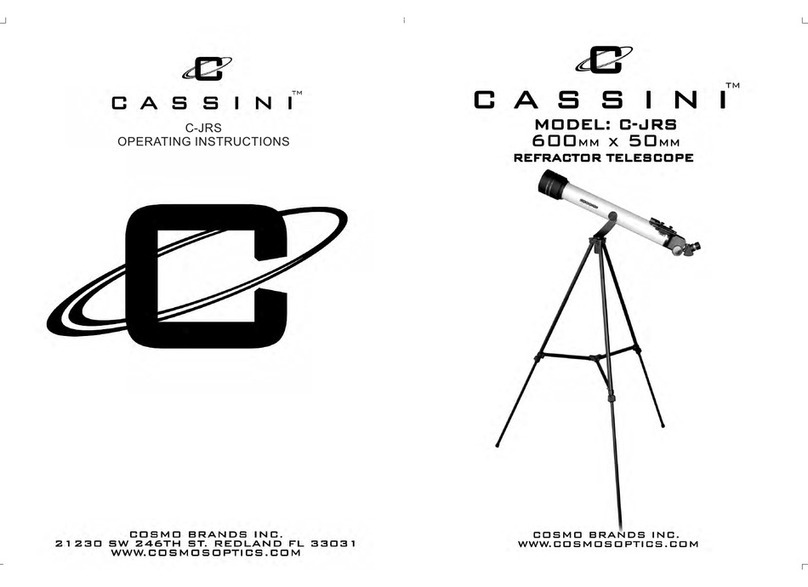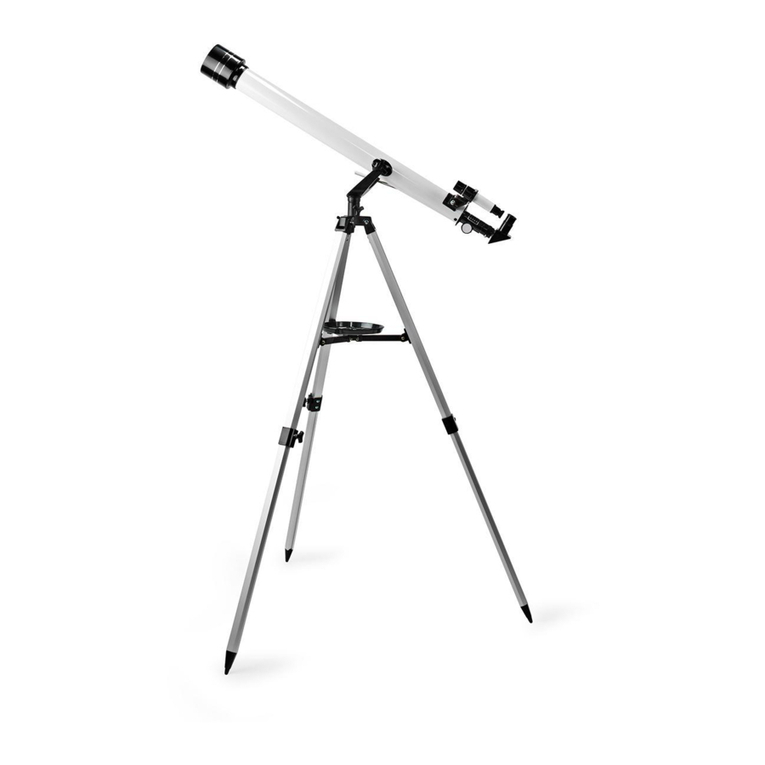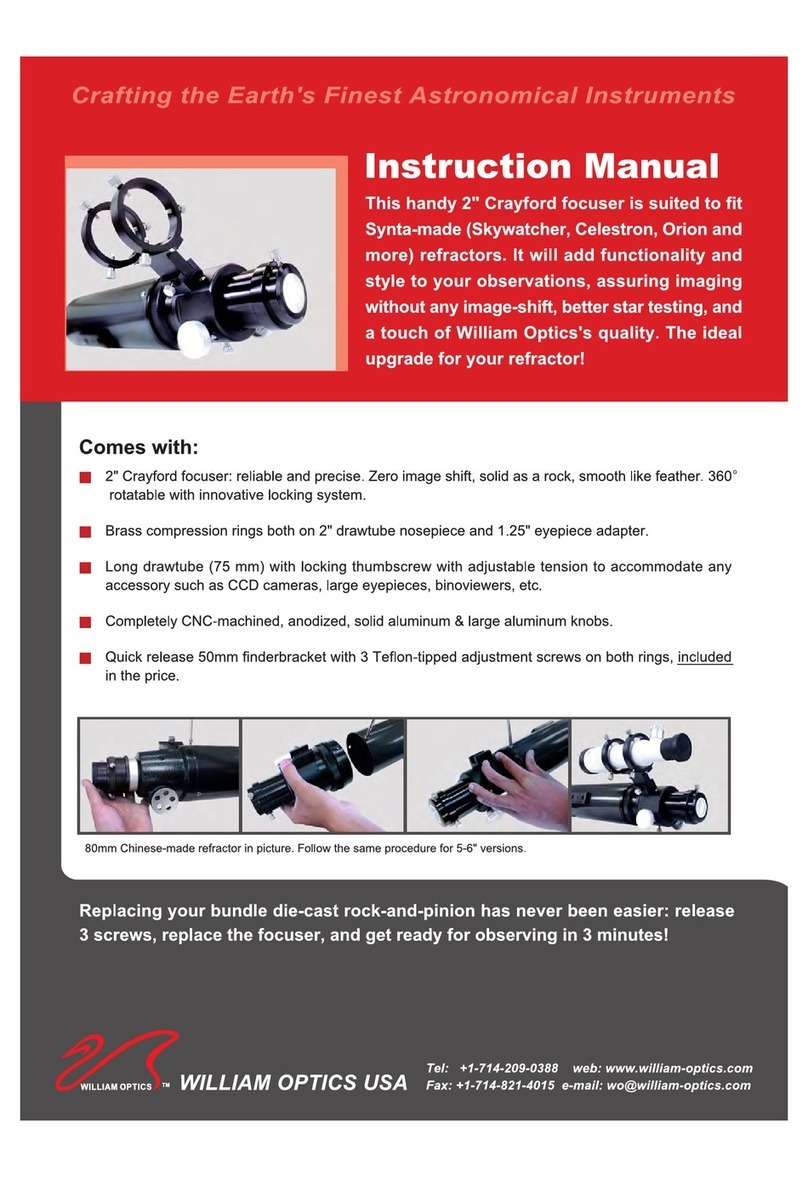
©2022 Celestron, Celestron and Symbol are trademarks of Celestron, LLC • All Rights Reserved
• celestron.com • Torrance CA 90503 USA
SOLAR WARNING: Never attempt to view the sun through any telescope
without a proper solar filter.
NEED ASSISTANCE?
Contact Celestron Technical Support
celestron.com/pages/technical-support
Printed in China
06-22
SAFETY INSTRUCTIONS
• Risk of explosion if battery is replaced by an incorrect type.
• The included battery is not rechargeable.
• Please use the battery in its original purpose to avoid causing the battery to short circuit. When the conductive material is connected directly to the battery positive and negative
will cause a short circuit.
• Do not use a damaged battery.
• Keeping the battery in an extremely cold or very hot location can result in shortened battery life.
• When replacing the battery, please refer to the instruction manual and pay attention to the positive and negative direction of battery.
• Do not put the battery in the fire. Dispose of the battery according to local regulations.
FCC IDENTIFIER: 2A2FG-X9
This device complies with Part 15 of the FCC Rules. Operation is subject to the following two conditions: (1) This device may not cause harmful interference, and (2) this device must accept any interference received, including
interference that may cause undesired operation.
CAUTION: Changes or modifications not expressly approved by the party responsible for compliance could void the user’s authority to operate the equipment.
NOTE: This equipment has been tested and found to comply with the limits for a Class B digital device, pursuant to part 15 of the FCC Rules. These limits are designed to provide reasonable protection
against harmful interference in a residential installation.
This equipment generates, uses and can radiate radio frequency energy and, if not installed and used in accordance with the instructions, may cause harmful interference to radio communications. However, there is no guarantee
that interference will not occur in a particular installation.
If this equipment does cause harmful interference to radio or television reception, which can be determined by turning the equipment off and on, the user is encouraged to try to correct the interference by one or more of the
following measures:
• Reorient or relocate the receiving antenna.
• Increase the separation between the equipment and receiver.
• Connect the equipment into an outlet on a circuit different from that to which the receiver is connected.
• Consult the dealer or an experienced radio/TV technician for help.
Product design and specifications are subject to change without prior notification. This product is designed and intended for use by those 14 years of age and older.
BONUS SOFTWARE INCLUDED FOR FREE
Not needed to operate the telescope but offered as a free bonus to enhance your astronomy experience:
MINIMUM SYSTEM REQUIREMENTS
Windows:
- Windows 7 or higher
- 500 MHz or higher processor
- 128 MB RAM
- 850 MB of hard disk space
- 32 MB OpenGL capable graphics card
- Minimum recommended monitor resolution of 1024 x 768 pixels.
Android: Version 4.0 and higher
Mac:
- Universal Binary (PPC/Intel compatible)
- OS X 10.4 or higher (10.5 or higher for Elementary)
- G3 450 MHz or higher processor
- 128 MB RAM
- 850 MB of hard disk space
- 32 MB OpenGL capable graphics card
- Minimum recommended monitor resolution of 1024 x 768 pixels.
Apple:
- iOS 4.3 and higher


